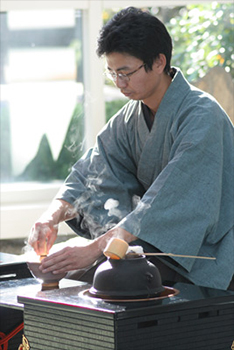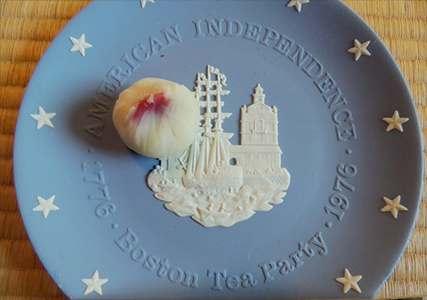Traveling to Japan Every Tuesday
-
-
slice.mit.edu
- 1
Filed Under
Recommended

Every Tuesday, MIT students sit on the floor of McCormick Hall and drink green tea.
For more than 10 years, Kyoko Wada has hosted weekly Japanese Chado tea ceremony classes for the MIT community. “I would like everyone to know about Japanese culture,” said Wada. “No experience required. Just bring a pair of white socks,” her website encourages.
A native of Japan, Wada began teaching the Japanese tea ceremony for MIT’s Women’s League when her husband Dr. Kazumi Wada joined MIT’s Electronic Materials Research Group (EMAT) in 1998. Based in Japan, Dr. Wada now leads EMAT-Japan at the University of Tokyo. In his frequent visits to the United States, he brings back green tea for his wife’s classes which now include lessons during MIT’s Independent Activities Period and an annual November Boston Tea Party for her students to perform their new skills.
The Japanese tea ceremony has ancient roots. Zen Buddhist Monk Eisai transported the first tea seeds to Japan from China more than 400 years ago. He is said to have introduced his fellow monks to tea’s eye-opening properties—much needed during long mediation practice.
“Chado—or the Way of Tea—simply means to heat water, put in tea and drink it,” once said Sen Rikyū, a 16th century Zen monk who formalized the tea ceremony from its more rustic beginnings. Women only became active in the tea ceremony after World War II when fewer men were alive to administer the ceremony. “The tradition had to be maintained,” explained Wada.
While the premise of Chado may be simple, the modern tea ceremony is meticulous in its details and symbolism, and it typically lasts four hours. At this year’s Boston Tea Party, Wada and her students decorated a traditional Japanese tea room with a border of fall flowers. Participants knelt on bamboo mats, and a banner decorated the wall with Chado’s guiding principles: harmony, respect, purity, and tranquility.

Students dressed in monochromatic kimonos passed out pumpkin seeds and dumplings made with cranberry sauce, an unusual treat. “When you see these utensils and sweets you feel a sense of fall,” said Aki Wada, co-teacher with Wada.
One student apprentice used a bamboo server with floral carvings to drop green matcha powder from a small container adorned with maple leaves and cherry blossoms, and then added hot water from a bamboo server. Participants bowed, turned their ceramic bowls clockwise twice, and took the first sip of green matcha tea.
What not to talk about during the ceremony? Politics, money, and religion are considered taboo. Everything is designed to encourage guests to treasure the moment, or in Japanese Ichi-go ichi-e, literally “one time, one meeting.”
“I can’t afford to go to Japan right now, so I figured this was the next best thing,” said Trina Bryant, a writing professor at Eastern Nazerene College who attended one of Wada’s events.








Comments
SK2 man
Mon, 10/19/2015 12:05am
This content is look that very interested.